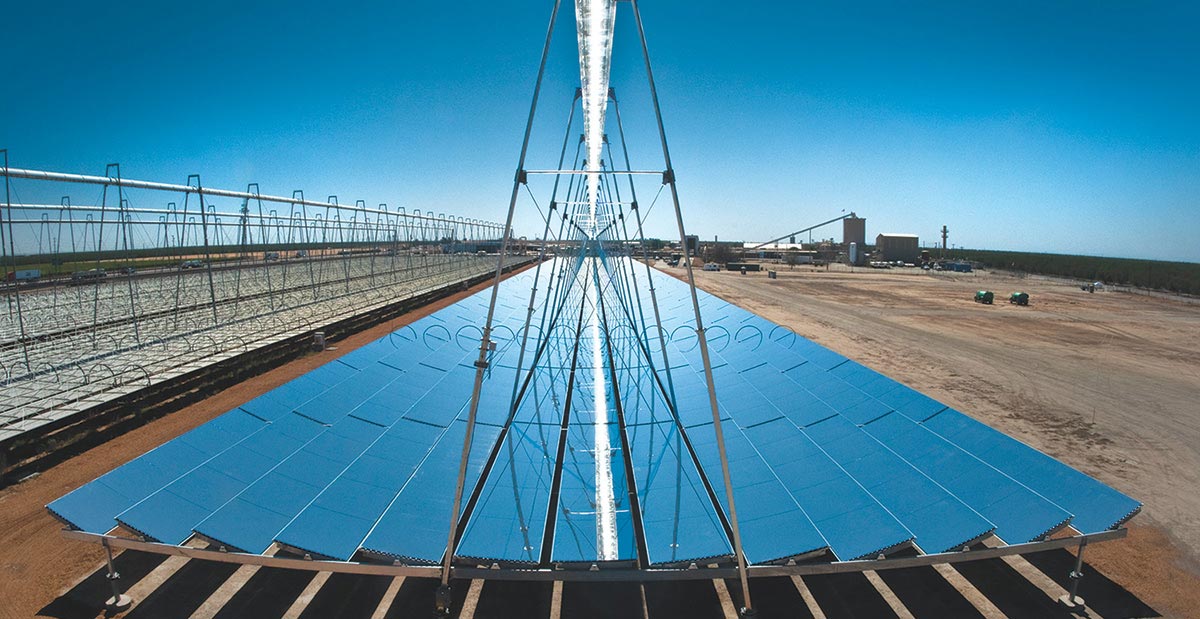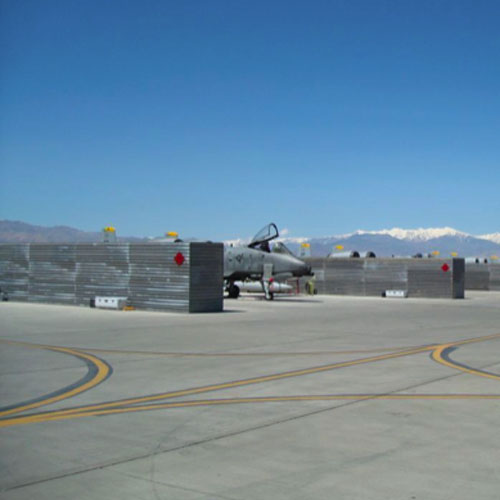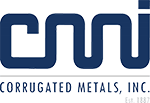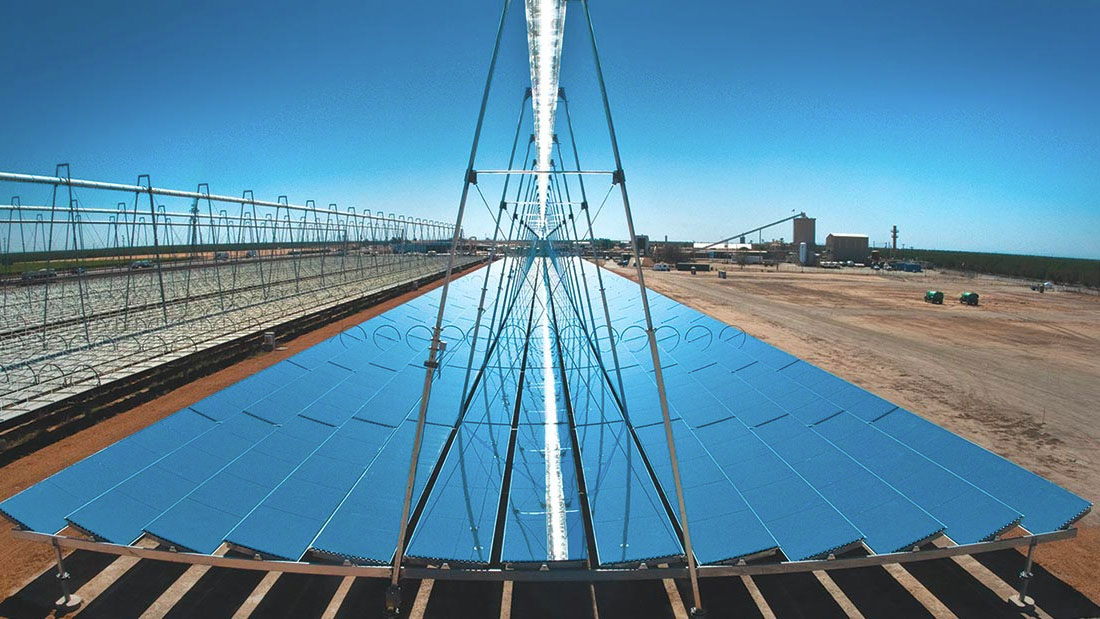Solar Plants
In response to the critical need to reduce inflation, governments worldwide emphasize renewable energy sources as a key driver of economic stability. In particular, the enactment of the Inflation Reduction Act has significantly boosted the renewable energy industry. This results in an increase in the development of solar panel facilities and other renewable infrastructure initiatives.
At CMI, fostering lasting partnerships with our valued customers across various markets is at the core of our philosophy. We are committed to a relentless pursuit of excellence, continuously improving our formed metal products to meet our customer’s ever-evolving needs. Furthermore, we consistently invest in state-of-the-art equipment and cutting-edge technology to bolster our manufacturing capabilities.

How Solar Plants Work in Electricity Generation
Solar plants, also called solar power plants or farms, leverage the sun’s energy to generate electricity. Numerous solar panels or photovoltaic (PV) modules are strategically positioned in these large-scale installations to convert sunlight into usable energy. Its process can be broken down into three primary stages: sunlight absorption, electricity conversion, and grid transmission.
Solar farms are at the forefront of the renewable energy revolution, offering a clean and sustainable solution while minimizing greenhouse gas emissions. As technology advances, they become increasingly sophisticated, incorporating innovations to maximize efficiency and output. They also integrate smart grid technologies for efficient electricity management and distribution.
The Role of the Inflation Reduction Act on Renewables
The Inflation Reduction Act has emerged as a catalyst in promoting and accelerating the adoption of renewable energy sources. This legislation recognizes the importance of transitioning from fossil fuels and harnessing sustainable alternatives to combat inflation while fostering economic stability. It also provides a framework encouraging investments in renewables by offering incentives, tax breaks, and financial support to individuals and businesses.
One key role of this act is incentivizing the construction and expansion of solar farms and other renewable energy facilities. Offering financial incentives reduces the barriers to entry and makes renewable energy projects more economically viable for companies. This encourages greater private investment and facilitates the expansion of renewable infrastructure, such as solar power plants.
In addition, the Act’s emphasis on renewable energy helps to diversify the energy mix and reduce reliance on volatile fossil fuels. It promotes energy security, stability, and independence by prioritizing the development of solar facilities and other renewable energy sources. This reduces the economy’s vulnerability to inflationary shocks and mitigates the risks associated with fluctuating petroleum prices.

EMERGING SOLAR TECHNOLOGIES AND ADVANCEMENTS
As the demand for renewable energy increases, researchers, engineers, and innovators strive to uncover new possibilities for solar power. These innovations increase solar infrastructure’s performance and efficacy, broaden their applications, and make solar energy more accessible and economically viable. Examples of emerging solar technologies include the following:
CONCENTRATED SOLAR POWER (CSP)
Unlike PV systems that directly convert sunlight into electricity, CSP concentrates the light using mirrors or lenses to generate heat. This heat is then used to drive a turbine and produce electricity. It also incorporates thermal energy storage, allowing excess heat generated during peak sunlight hours to be stored for later use. This enables CSP plants to provide electricity even during cloudy or rainy days.
SOLAR WINDOWS
Also called transparent solar cells or PV windows, solar windows integrate thin layers of solar cell materials into the glass panels. Their key principle is to capture sunlight and convert it into electricity while allowing visible light to pass through. They also have transparent conductive materials and light-absorbing semiconductor layers incorporated into the glass structure.
FLOATING SOLAR FARMS
Floating solar farms or floating solar panels are a unique approach to harnessing solar energy. Instead of being mounted on rooftops or occupying land space, they are installed on bodies of water like reservoirs, lakes, and ponds. The concept behind them is to use underutilized water surfaces for power generation, offering several advantages over traditional land-based installations.
TANDEM SOLAR CELLS
Tandem or multijunction solar cells are PV devices combining multiple semiconductor layers with different band gaps. They aim to achieve higher efficiency in converting sunlight into electricity. Their principle is to capture a broader range of the solar spectrum by utilizing materials optimized for specific light wavelengths.
SOLAR-POWERED DESALINATION
Solar-powered desalination is a process that utilizes solar energy to convert seawater or brackish water into freshwater. This addresses the pressing issue of water scarcity in regions with limited access to clean water sources. Additionally, combining solar power and desalination technologies provides a sustainable and environmentally friendly solution for freshwater production.
Here are other examples of emerging solar technologies:
- Perovskite solar cells
- Solar-powered wearable devices
- Solar energy storage
- Solar paint
- Solar tiles
- Solar tracking systems
- Transparent solar cells
APPLICATIONS OF CORRUGATED METALS IN SOLAR PLANTS
Solar power plants — encompassing panel installations, thermal systems, and other energy infrastructure — require durable materials that withstand harsh environmental conditions. Corrugated metals, characterized by their distinctive wavy pattern and strength, offer exceptional durability and resistance to corrosion. This makes them well-suited for solar energy applications.
The following are examples of the specific uses and applications of corrugated metals in solar plants:
Cladding refers to covering the exterior walls of buildings or structures with protective and decorative layers. Corrugated metal cladding involves the installation of metal panels onto the outer walls of buildings within the solar power plant. With their distinct ridges and valleys, these panels create an appealing and modern aesthetic while also serving functional purposes.
Mounting systems provide the necessary support, stability, and adjustability for solar panels to capture sunlight efficiently and maximize energy generation. Corrugated metals are employed in constructing mounting systems due to their strength, durability, and corrosion resistance. These properties ensure that the mounting structures can withstand the weight of the solar panels.
Racking systems are the foundation for mounting solar panels on ground-mounted installations or rooftops. Corrugated metal rails or crossbars are often employed to create the framework that holds the panels in place. These metal components are built to withstand the load of the boards and the forces exerted by wind and other environmental factors.
On the other hand, frames provide support and stability to individual solar panels, keeping them in position. Corrugated metals are commonly used to fabricate structures due to their strength-to-weight ratio and ease of customization. They can also be tailored to the specific dimensions and requirements of the panels, providing a precise and secure fit.
In solar thermal systems, reflective surfaces concentrate sunlight onto a receiver or absorber, which converts the solar energy into heat. Corrugated metal panels with reflective coatings around the receiver help redirect and concentrate sunlight onto the target area. This increases the temperature and improves the efficiency of heat conversion.
Corrugated metal roofing typically consists of solar panels with a distinctive wavy pattern. They are made from galvanized steel, aluminum, or other metals corrugated or shaped into alternating ridges and valleys. This design enhances the strength and rigidity of the roofing material while providing effective water drainage.
Other applications of corrugated metals include the following:
- Cable trays and conduits
- Enclosures and shelters
- Fence and security
- Grounding systems
- Solar panel frames
- Structural components
TRUST CORRUGATED METALS FOR SUPERIOR FORMED METAL PRODUCTS!
With CMI’s unparalleled roll forming and corrugating expertise, we provide a comprehensive selection of materials and finishes tailored to precise specifications! We deliver top-quality products that meet and surpass our customers’ expectations while adhering to strict timelines and budgetary constraints.
Whether you need assistance selecting the right materials or want to discuss custom solutions, our team is ready to assist you! Contact us today to initiate a conversation about your project requirements. You can also request a quote now.


